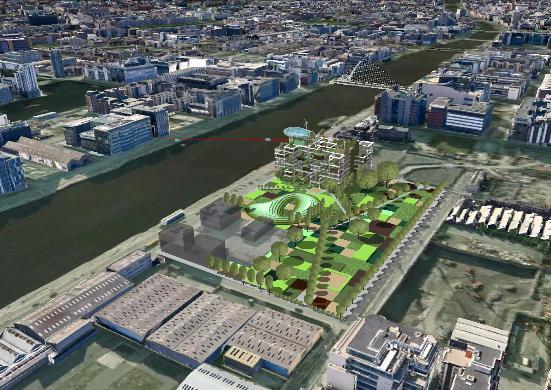Seeds of change in plan for abandoned Anglo HQ

A plan to transform the half-built Anglo headquarters in Dublin into a 'vertical park' for public use would stand as a permanent reminder of the problematic nature of a system so orientated towards property development if it goes ahead. By Philip Lawton.
If the last decade was dominated by ‘creativity’, then ‘innovation’ has surely now been well and truly adopted as the current buzzword of choice. This can be witnessed throughout various institutions and endeavours, from the recently re-titled Department of Jobs, Enterprise and Innovation, to Innovation Dublin (an outcome of the ‘Creative Dublin Alliance’), and the TCD/UCD Innovation Alliance. It is hard to trace exactly where the focus on innovation came from. Perhaps notions of ‘culture’ and ‘creativity’ are too difficult to clearly define, too loose around the edges, so to speak. Innovation is clear. It has a direction and a specific output. It represents a desire to connect diverse elements such as scientific output, technological change, the creative arts, and, at times, the social sciences towards largely economic goals. The new Provost of Trinity College, Professor Patrick Prendergast, recently emphasised this perspective as follows; “When James Joyce wrote Ulysses he was being disruptive in changing the way we think about the novel. Joyce was a true innovator. A century later he might have created Google.” This might have been a throwaway comment, yet it highlights the current desire for that which might once have sat on the outside to be brought centre-stage.
Certainly those areas associated with ‘culture’, the arts, and ‘creativity’ remain a feature of current activities and debates, but increasingly there seems to be a desire to quantify their actual impact. While those sectors focused upon innovation in various guises (such as the aforementioned tech and science sectors) will undoubtedly play a role in reshaping the Irish economy in the coming years, there seems to be a very real danger that the role of those elements that are less tangible - such as the ability to critically engage with, and challenge, the structures of society - will become lost in the search for direct and measurable outputs at every turn. While economic recovery is paramount, the current period also offers the potential to challenge the very structures that shape our society.
The recent plan by Mahoney Architects to convert the half-built Anglo Headquarters into a ‘vertical park’ raises some interesting questions about the relationship between innovation, the built environment, and the widely accepted norms of property markets. As outlined on the project website: “The Trees on the Quays project proposes to radically transform the shell of the abandoned Anglo Irish Bank Head Quarters into an innovative Public Park which will become a focal point for the commemoration of the Centenary of the Irish Republic.” There is much to be admired in this proposal, both in as much as it would stand as a permanent reminder of the problematic nature of a system so orientated towards property development; and in the potential to transform the building into something completely different for public use. Crucially however, the potential for such a project to gain traction or receive support lies in the willingness of different agencies, such as NAMA and the Dublin Docklands Development Authority, to challenge the status quo. It will take a willingness to show that land-use is not simply at the mercy of booms and slumps, and that the alternative use for the Anglo Headquarters (or similar half-built developments) is not just about finding temporary solutions until, as the Irish Times recently stated, “…the property market recovers”.

If Irish society is to get past the obsession with property that so dominated the last two decades, there must be a willingness at different institutional levels to challenge the meanings of urban space beyond that which is related to the property market. Ideas such as the Vertical Park, and similar proposals by NamaLab, can help redefine the meanings of our towns and cities, so long as they are allowed to. This requires serious reflection of the structures that contribute to and shape urban space in the first place.
{jathumbnailoff}
Originally published on Ireland After NAMA. Republished with permission.
Images: (c) Mahoney Architecture 2011.
